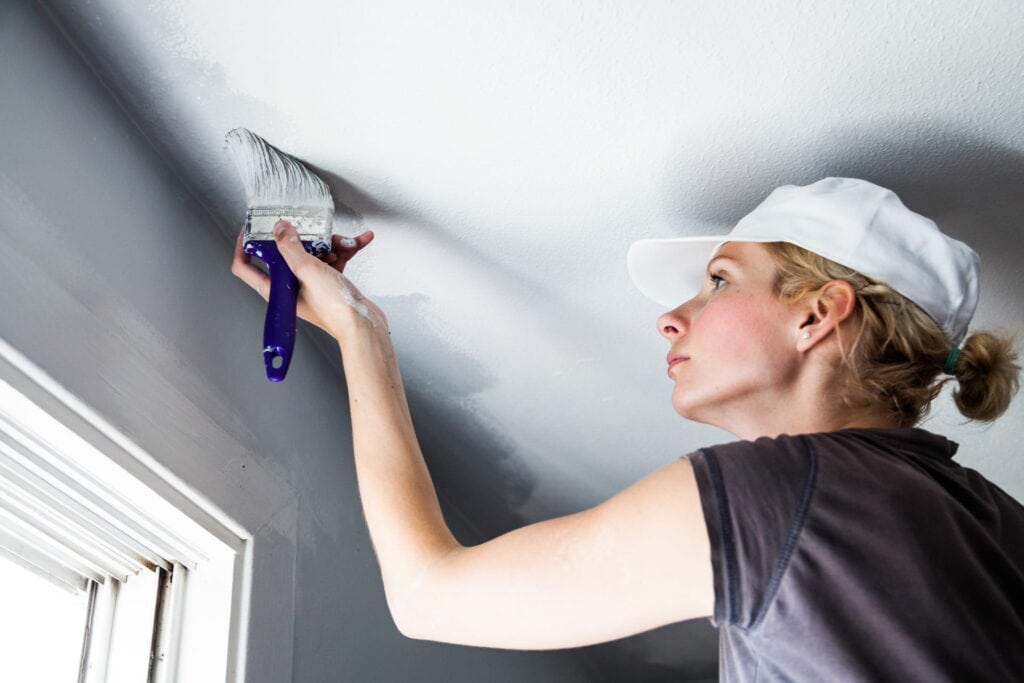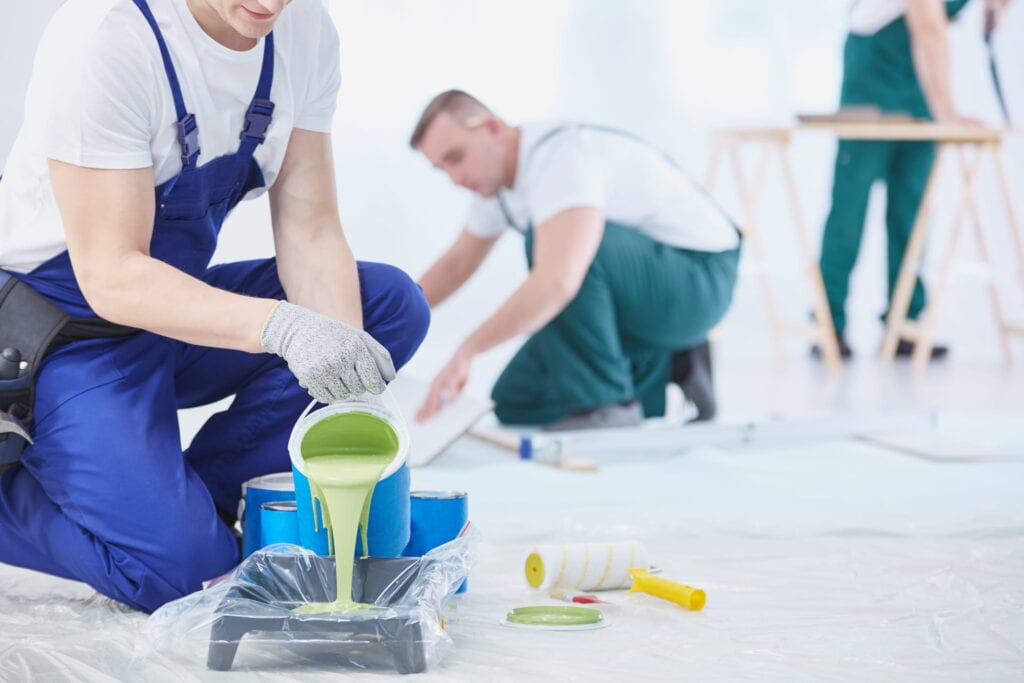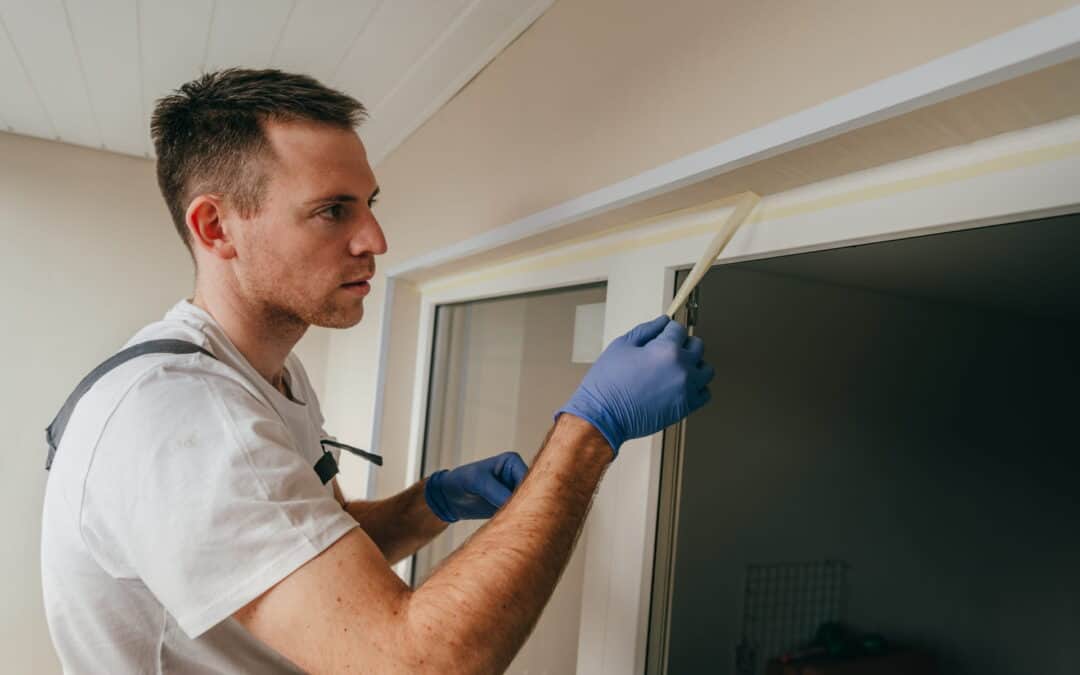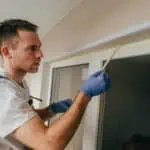Most people want a straightforward answer to how long a painting project will take, but professional painters take a more precise and layered approach. A professional painter estimates the timeframe from assessing the physical space, environmental conditions, and technical requirements of the job. Every property has different characteristics that affect preparation, product choice, and application speed. According to Ponderosa Painting, “Accurate scheduling comes from careful evaluation—rushing through the process often creates more problems than it solves.”
1. Room Dimensions and Architectural Features
Basic measurements only provide a starting point. The way a room is shaped, how high the ceilings are, and what kind of detailing it includes all affect how long painters need to complete their work. Detailed interiors demand more tools, time, and attention to precision.
-
High ceilings often require taller ladders or scaffolding, increasing setup time
-
Crown molding, tray ceilings, and window casings need careful taping and brushwork
-
Open floor plans might allow faster movement, but connected spaces extend total coverage
Ponderosa Painting evaluates how structure influences workflow before committing to any schedule, especially in multi-room or customized properties.
2. Surface Integrity and Wall Preparation
Wall condition is one of the biggest timeline factors. A smooth, clean wall speeds up painting. Flawed or damaged surfaces require multiple steps—sometimes more than the actual painting itself. Paint only adheres properly when the surface beneath it is stable and prepared.
-
Cracks, rough textures, or peeling layers need to be patched, sanded, and sealed
-
Water stains or smoke marks demand stain-blocking primers before new paint can stick
-
Flaking from old oil-based paints must be removed, or the new finish may fail quickly
Ponderosa Painting conducts full surface inspections ahead of time, often uncovering hidden issues that homeowners didn’t realize could extend the timeline.
3. Paint Drying and Curing Expectations
Drying and curing are often confused, but they affect different parts of the process. Drying happens on the surface, while curing happens deep within the paint layer. Both influence how quickly painters can apply the next coat or wrap up a space.
-
Most latex paints feel dry within two hours but need four to six hours before recoating
-
Oil-based products may stay soft for 10 to 14 hours in enclosed rooms
-
Damp weather, stagnant air, or cold temperatures slow down drying significantly
Ponderosa Painting often brings fans or air movers to keep circulation steady during interior jobs, especially in winter or rainy seasons when ventilation is minimal.

4. Number of Paint Layers Required
Paint coverage depends on what color is underneath, what’s going on top, and what type of finish is involved. Some walls need multiple coats because the first layer doesn’t fully cover, or the surface soaks up the paint unevenly.
-
Covering dark or saturated colors often requires a tinted primer and two top coats
-
Bare drywall tends to absorb paint quickly and may need an extra layer for smooth results
-
Switching from a glossy to a matte or satin finish may require extra prep or layers for proper adhesion
According to Ponderosa Painting, even premium paints designed for one-coat coverage usually need a second application if the surface has texture or prior color variation.
5. Paint Selection and Performance Characteristics
Paints are made for different conditions—some are quick-drying, while others prioritize durability or moisture resistance. Each formula affects not just drying time but also how long each coat takes to apply evenly.
-
Quick-dry options may allow same-day recoating but require more skill to avoid marks
-
High-sheen or enamel paints take longer to cure but provide lasting, washable finishes
-
Paints with added mildew resistance or stain-blockers are thicker and need slower application
Ponderosa Painting chooses products not just for speed but for the conditions of the home—knowing that the right product helps avoid callbacks and uneven finishes.
6. Jobsite Access and Setup Logistics
The way a space is arranged before painters arrive makes a noticeable difference. Crowded rooms, tight corners, or poor lighting slow down every step, from masking to cleanup. Efficient jobs start with clear, open spaces and reliable access.
-
Large furniture and electronics that stay in place must be covered, adding setup time
-
Stairwells or multi-level spaces usually require special ladders or adjustable platforms
-
Dimly lit rooms slow down detail work and increase the chance of missed spots or touch-ups
Ponderosa Painting encourages property owners to clear small items and breakables ahead of time. This speeds up setup and ensures everything is protected properly.

7. Weather and Environmental Impact on Exterior Work
Exterior painting depends heavily on what the weather is doing—not just that day, but for several days before and after. Sudden shifts in temperature or humidity can disrupt paint adhesion, extend drying time, or even ruin an entire coat.
-
Warm, dry days between 60°F and 78°F are ideal for outdoor application
-
Humid mornings or fog can trap moisture on surfaces, preventing paint from bonding
-
Direct sun can overheat paint, making it dry too quickly and leading to cracks
Ponderosa Painting tracks both hourly and long-range forecasts before booking outdoor work. Even when the sun is shining, surface moisture or wind may still delay progress.
Key Takeaways for 7 Key Aspects Painters Analyze When Estimating Project Timelines
Painting isn’t just about brushing on color—it’s a layered process shaped by tools, materials, structure, and the environment. Ponderosa Painting uses a proven approach that begins with assessing all of these moving parts to create a timeline based on real conditions, not assumptions. By understanding the specific needs of each space, they’re able to provide time estimates that hold up, even when jobs get complicated.
Key Takeaways for Understanding How Painters Estimate Project Duration
-
Room structure, ceiling height, and layout directly impact workflow
-
Surface issues like peeling or staining add significant prep time
-
Drying and curing windows vary by paint type, air quality, and temperature
-
Some jobs require more coats due to finish type, surface material, or color change
-
Outdoor projects depend on temperature, wind, and surface moisture—not just clear skies
Frequently Asked Questions
Why do painters sometimes need more time than expected?
Unexpected wall damage, added prep steps, or drying delays often extend projects beyond initial estimates.
Do premium paints always reduce project time?
Not always. Some offer better coverage, but many still need multiple coats or longer dry times depending on the surface and conditions.
Is weather really that important for painting exteriors?
Yes. Even small weather changes—like early morning humidity—can prevent paint from adhering properly and delay drying by hours.
Can clients help reduce job time?
Yes. Clearing furniture, removing artwork, and providing ventilation can shorten both setup and overall job time.
Are drying fans necessary for indoor work?
Sometimes. In rooms with poor airflow or high humidity, drying equipment helps move the project along and prevents uneven curing.
Louisiana News Post provides expert advice on home and garden services like gardening, landscaping, hardscaping, renovating, remodeling, roofing, HVAC, and interior design to help readers create their dream spaces. Their practical tips and creative solutions are inspired by years of hands-on experience and a commitment to affordable living. Whether you’re a seasoned handyman or just starting to explore home improvement, Louisiana News Post’s articles are a reliable resource for innovative ideas and detailed guidance.








